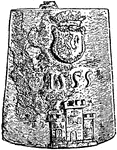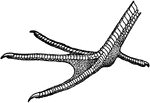
Horizontal Section of Ear
Horizontal section of right ear; upper half of section, viewed from below.

Mesial Section Through Larynx
Mesial section through larynx, to show the outer wall of the right half.

John Trumbull
John Trumbull (June 6, 1756 – November 10, 1843) was an American artist during the period of the…

Small Intestine with Mesentery and Vessels
A portion of the intestine, with mesentery and vessels. The peritoneal coat has been removed from the…

Elisha Kent Kane
Elisha Kent Kane (28 February 1820 – 16 February 1857) was a medical officer in the United States…

Battleground at Concord
"Battle ground at Concord. This view, looking southeast, is from the road leading to the village, by…
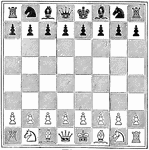
Chess Board
Chess is a recreational and competitive game played between two players. Sometimes called Western chess…
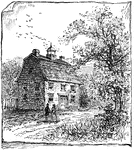
Old Monmouth Courthouse
The Battle of Monmouth was an American Revolutionary War battle fought on June 28, 1778 in New Jersey.…
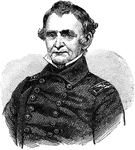
Charles Morris
Commodore Charles Morris, USN (1784 – 1856) was a U.S. naval administrator and officer whose service…
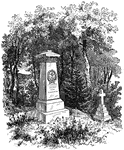
Charles Morris's Monument
Commodore Charles Morris, USN (1784 – 1856) was a U.S. naval administrator and officer whose service…

Eleazar Williams
A dark mystery shrouds the fate of the eldest son of Louis XVI of France and Marie Antoinette, who was…

Gold Fish
The Goldfish, Carassius auratus, was one of the earliest fish to be domesticated, and is still one of…
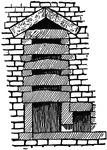
Section of the King's Chamber
At the end of the lengthy series of entrance ways leading into the interior is the structure's main…
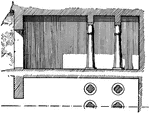
Section and Half-Plan of a Tomb at Beni-Hassan
Beni Hasan (also written as Bani Hasan, or also Beni-Hassan) is a village in Middle Egypt about 25 km…

Colosseum, Half Plan
The Colosseum or Roman Coliseum, originally the Flavian Amphitheatre (Latin: Amphitheatrum Flavium,…

Section of Notre-Dame du Port
"It was in Central France, and mainly along the Loire, that the systematic development of vaulted church…
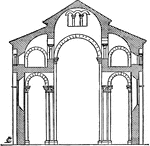
Plan of St. Sernin, Toulouse
"It was in Central France, and mainly along the Loire, that the systematic development of vaulted church…

Half-Hitch
"Half-Hitch -- Pass the end a of the rope round the standing part b and through the bight." -Britannica,…

Two Half-Hitches
"Two Half-Hitches -- The half-hitch repeated; this is commonly used, and is capable of resisting to…
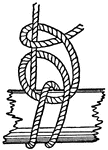
Fisherman's Bend
"Fisherman's bend -- Take two turn round a spar, then a half-hitch round the standing part and between…

Inside Clinch
"Inside Clinch -- The end is bent close round the standing part till it forms a circle and a half, when…

Midshipman's Hitch
"Midshipman's Hitch -- Take two round turns inside the bight, the same as a half-hitch repeated; stop…

Rolling Hitch
"Rolling Hitch -- Two round turns are taken round a spar or large rope in the direction on which it…
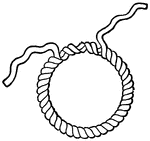
Grummet-Strop
"Grummet-Stop -- Made by unlaying a piece of rope of the desired size about a foot more that three times…
Sheep-Shank
"Sheep-Shank -- Formed by making a long bight in a topgallant back stay, or any rope which it is desirable…

The Cromwell House at Stuntney
Stuntney is about a mile and a half outside the cathedral city of Ely. Oliver Cromwell lived here for…
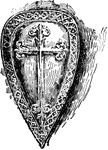
Medieval Shield
A shield of mounted men-at-arms from the first half of the 13th century, considered the High Middle…

Goliath Beetle
The Goliath beetles are among the largest insects on Earth, if measured in terms of size, bulk and weight.…

Repair Link of Chain
"Repair-link for round-link chain. A, section by a meridian plane; B, perspective elevation showing…

Mandible of a Rabbit
Lateral half of mandible of a rabbi, opened to show the arrangement of rodent teeth.
Profile of the Moulding of the Walls between the Columns at the Great Temple at Philæ
The columns form three or four rows, the rows which face the court being closed in by walls of about…

Capital and Entablature from the Rock Tomb of Darius
The columns in the ruins of Persepolis are circular and slender, and have capitals and bases. The capital…

Double Twist on an Astragal
An astragal is molding profile composed of a half round surface surrounded by two flat planes (fillets).…
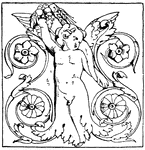
Dancing Half-Figure Panels
The Dancing Half-Figure Panels come from an altar. It is a design of a half-figure human body with the…
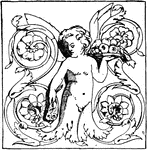
Half-Figure Panels
The Half-Figure Panels come from an altar. It is a design of a half-figure human body with the lower…
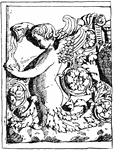
Half-Figure Roman Relief
The Half-Figure Roman Relief is a design of a half-figure human body with a lower half that has a scroll…
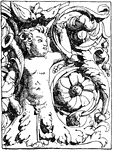
Half-Figure Socle of Altar
The Half-figure Socle of Altar is the base platform design of the altar. It is a design of two half-figure…

Half-Figure Relief
This Half-Figure Relief is a design where the upper half is a human figure and the lower half is a scrolled…

Border Undulate Band
The border undulate band is a design found on half- columns in St. Trinita, Florence during the Italian…
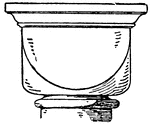
Romanesque Cushion Capital
The Romanesque Cushion Capital is found in St. Gereon's church in Cologne, Germany. It is a design of…
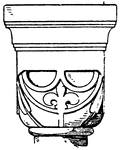
Romanesque Cushion Capital
The Romanesque cushion capital is a design found in a monastery in Lippoldsberg, Germany. The design…
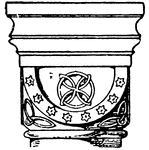
Romanesque Cushion Capital
This Romanesque Cushion Capital is found in the Abbey church in Germany. It is a design of a half sphere…
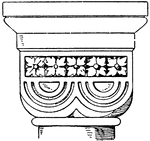
Romanesque Double-Cushion Capital
The Romanesque Double-Cushion Capital is an 11th century design found in the Rosheim church in France.…
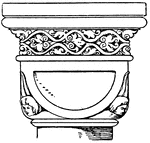
Romanesque Double-Cushion Capital
The Romanesque Double-Cushion Capital is a design of a half sphere that is cut by planes below and on…

Modern Atlante Console
The modern atlante console is a male half-figure shown in front and side view. It is used as a support…
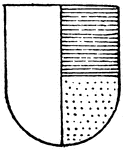
Per Pale Ordinary
The Per Pale Ordinary has the right half side in argent (silver) and the left half in per fesse azure…

Per Fesse Ordinary
The Per Fesse Ordinary has an upper half that is per pale sable (black) and gules (red), and the lower…
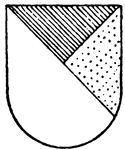
Per Bend Ordinary
The Per Bend Ordinary has the dexter half in argent (silver), and the sinister (left side) per bend…
Architecture of the Colosseum
The construction of arches and vaults did not remain confined to the interior of buildings, but imparted…
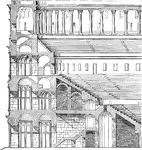
Elevation and Section of the Colosseum
"Elevation and Section of the Tiers of Seats and Substructure of the same from the Colosseum at Rome.…
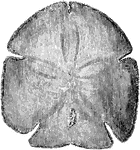
Encope
"Encope emarginata. Encope is a genus of irregular clypeastroid sea-urchins, of the family Mellitidae."…
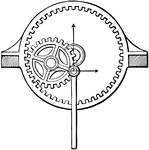
Epicycloidal Wheel
"Epicycloidal wheel, a wheel or ring fixed to a framework, toothed on its inner side, and having in…
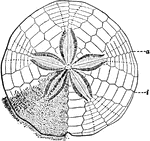
Sand Dollar
The common sand dollar or flat sea urchin. Upper surface with the spines partly removed.
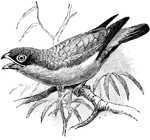
Australian Roller on Branch
The Australian Roller (Eurystomas pacificus) is an Old World bird in the Coraciidae family.
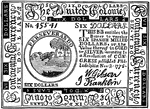
Continental Paper Money
This six dollar bill is an example of Continental paper money of the United colonies issued in 1776.

Apse of a Cathedral
An illustration depicting the inside of an apse. In architecture, the apse (Latin absis "arch, vault";…
